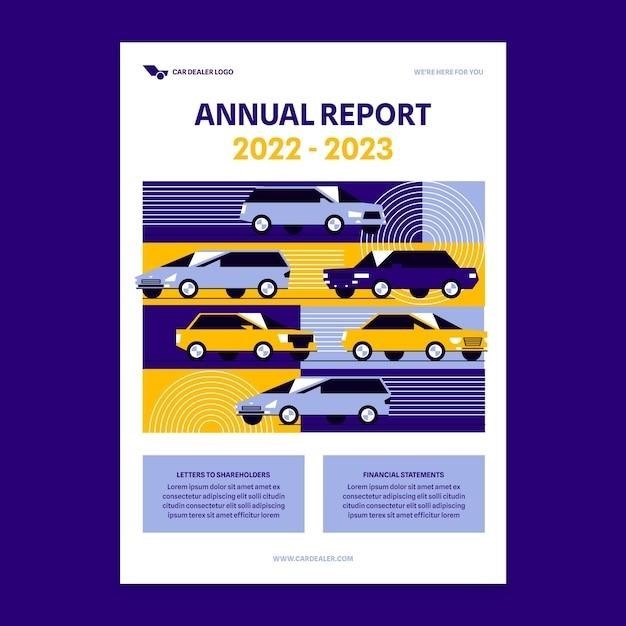BMW X3 E83 Buyers Guide⁚ An Overview
The BMW X3 E83‚ a popular compact SUV‚ offers a blend of reliability and performance. While generally robust‚ age and mileage necessitate careful inspection before purchase. This guide helps navigate the buying process‚ highlighting key considerations for potential buyers.
Engine Options and Reliability
The BMW X3 E83 boasted a range of petrol and diesel engines. Petrol options included the 2.0i‚ 2.5i‚ 3.0i‚ and 3.0si‚ offering varying power outputs. Diesel variants comprised the 2.0d and 3.0d‚ known for their fuel efficiency. While generally reliable‚ certain engines presented more challenges. The N47 2.0-liter diesel‚ for example‚ faced issues with its timing chain‚ a costly repair. The 3.0-liter diesel‚ however‚ generally proved more durable. Pre-purchase inspections are crucial‚ especially for higher-mileage vehicles. Checking service history and scrutinizing for any signs of timing chain problems in the 2.0d is essential. Regular maintenance is key to prolonging engine life and preventing costly repairs. Understanding the engine’s specific strengths and weaknesses‚ coupled with a thorough inspection‚ will help buyers make an informed decision. Consider a pre-purchase inspection from a reputable BMW specialist to identify potential issues before committing to a purchase.
Common Problems and Maintenance
Beyond engine concerns‚ several other issues can affect the BMW X3 E83. Water ingress into the headlight units is a common problem‚ potentially leading to expensive replacements. The cooling system‚ including the water pump‚ can also fail‚ often resulting in overheating. Furthermore‚ the VANOS system‚ responsible for variable valve timing‚ may malfunction‚ impacting performance and fuel economy; Regular maintenance is vital to mitigate these issues. Adherence to the manufacturer’s service schedule is crucial‚ including timely replacement of fluids and filters. Inspecting the cooling system for leaks and addressing any issues promptly is essential. Checking for water in the headlights during a pre-purchase inspection is highly recommended. Addressing these potential problems proactively minimizes the risk of costly repairs down the line. A well-maintained X3 E83 can provide years of reliable service‚ but neglecting maintenance can lead to significant expenses.
Pre-Purchase Inspection⁚ What to Look For
A thorough pre-purchase inspection is crucial for any used BMW X3 E83. Begin by checking the vehicle’s history report for any accidents or major repairs. Examine the exterior for signs of rust‚ damage‚ or poorly executed bodywork. Pay close attention to the condition of the tires‚ wheels‚ and suspension. Test drive the vehicle‚ noting any unusual noises‚ vibrations‚ or handling issues. Inside‚ inspect the interior for wear and tear‚ paying attention to the upholstery‚ dashboard‚ and controls. Check the functionality of all electrical components‚ including lights‚ windows‚ and the infotainment system. A professional mechanic’s inspection is highly recommended. This should include a comprehensive assessment of the engine‚ transmission‚ and other vital systems. Look for evidence of leaks‚ worn parts‚ or any other potential problems. Don’t hesitate to ask the seller questions about the vehicle’s maintenance history and any known issues. Remember‚ a diligent inspection can save you from costly repairs later.

Choosing the Right BMW X3 E83
Selecting the ideal BMW X3 E83 involves careful consideration of various factors. Engine choice (petrol vs. diesel)‚ trim level features‚ and the vehicle’s overall condition and mileage significantly impact the decision. Prioritize a thorough inspection.
Engine Options⁚ Petrol vs. Diesel
The BMW X3 E83 offered a range of petrol and diesel engines‚ each with its own strengths and weaknesses. Petrol options‚ generally the 2.0i‚ 2.5i‚ and 3.0i‚ provided lively performance but might be less fuel-efficient than their diesel counterparts. The 2.0-liter and 3.0-liter diesel engines‚ known as the 2.0d and 3.0d respectively‚ were favored for their fuel economy and torque. However‚ the reliability of the 2.0d‚ particularly the N47 engine‚ has been a subject of concern amongst owners and mechanics due to potential timing chain issues. While the 3.0d generally offered better reliability‚ it came at a higher purchase price; The choice between petrol and diesel depends heavily on individual priorities⁚ fuel efficiency‚ performance‚ and budget. Researching specific engine codes (e.g.‚ N52‚ N47) will illuminate potential issues and maintenance requirements associated with each choice. Consider factors like annual mileage and driving style to make an informed decision‚ remembering that a well-maintained engine‚ regardless of fuel type‚ can provide years of dependable service.
Trim Levels and Features
The BMW X3 E83 offered various trim levels‚ each providing a different level of standard features and equipment. Base models typically included essential features for comfort and functionality‚ while higher trim levels added luxury appointments and advanced technology. Options varied across the model years‚ so it’s crucial to research the specific year and trim level of interest. Features to consider include the iDrive infotainment system (check for functionality and potential software updates)‚ leather upholstery (assess its condition for wear and tear)‚ sunroof (ensure proper operation and check for leaks)‚ and various driver-assistance systems (if available). The availability of options like heated seats‚ navigation‚ and premium sound systems varies. Examine the vehicle’s specification sheet carefully to understand what features are included. Remember that the condition of these features significantly impacts the overall value and enjoyment of the vehicle‚ so a thorough inspection is essential before purchasing. Compare the features available in different trim levels to find the best fit for your needs and budget.
Mileage and Condition Considerations
Mileage is a crucial factor when assessing a used BMW X3 E83. Higher mileage generally indicates more wear and tear on various components‚ potentially leading to increased maintenance costs. However‚ a well-maintained vehicle with high mileage can still be a reliable choice. Thoroughly inspect the vehicle’s service history; consistent maintenance significantly impacts longevity. Pay close attention to the bodywork for any signs of damage‚ rust‚ or previous repairs. Check for paint inconsistencies‚ which might indicate prior accidents. Inspect the interior for wear and tear on upholstery‚ carpets‚ and controls. Test all electrical components‚ including lights‚ wipers‚ and power windows. Take a test drive to evaluate the vehicle’s handling‚ braking‚ and overall performance. Listen carefully for unusual noises or vibrations‚ which could indicate underlying mechanical issues. A pre-purchase inspection by a qualified mechanic is highly recommended‚ especially for vehicles with higher mileage or an unclear service history. This inspection will identify potential problems before committing to a purchase‚ saving you from costly repairs down the line. Carefully consider the overall condition relative to the mileage and asking price to ensure a sound investment.

BMW X3 E83⁚ A Deeper Dive
This section delves into the specifics of the X3 E83‚ exploring its interior and exterior features‚ technological aspects‚ and safety ratings to provide a comprehensive buyer’s perspective.
Interior and Exterior Features
The BMW X3 E83’s interior offered seating for five adults‚ with sufficient headroom and legroom‚ particularly in the front. The dashboard often included the iDrive infotainment system‚ controlled via a rotary knob‚ enhancing user experience. Material quality varied depending on the trim level; higher trims featured more refined materials. Exterior styling is a matter of personal preference‚ but generally‚ the E83 presents a sporty yet rugged aesthetic. Common exterior features included alloy wheels‚ fog lights‚ and roof rails‚ adding to its functionality. The design elements‚ while showing its age‚ still hold a certain timeless appeal. Early models may have simpler interiors compared to later production years‚ reflecting design and materials evolution. Expect variations in interior color and upholstery options‚ dependent on the year and trim level of the specific vehicle. Consider carefully your preferences for both interior and exterior aesthetics when assessing a potential purchase. The overall condition of both the interior and exterior will be important factors when considering value and future maintenance.
Infotainment System and Technology
The BMW X3 E83’s infotainment system‚ a notable feature for its time‚ typically included the iDrive system. This system‚ controlled via a rotary dial‚ offered navigation‚ audio controls‚ and other vehicle functions. However‚ by today’s standards‚ the technology may seem dated. Screen resolution and interface responsiveness might fall short of modern expectations. The audio system quality varied depending on the specific options chosen by the original owner. Some models might feature premium sound systems‚ while others had more basic setups. Bluetooth connectivity was not standard on all models‚ a key consideration for modern smartphone integration. Additionally‚ features like rear-view cameras were not always standard and were likely added as optional extras. The availability of these features will vary among different E83 models‚ depending on the year of manufacture and the trim level. When assessing an E83‚ check the functionality of the infotainment system and ensure it meets your needs in terms of features and user-friendliness. Consider the age of the technology and whether it aligns with your expectations for a used vehicle.
Safety Features and Ratings
Safety features on the BMW X3 E83 varied depending on the year and trim level. Standard features likely included anti-lock brakes (ABS)‚ electronic stability control (ESC)‚ and multiple airbags. However‚ modern advanced driver-assistance systems (ADAS) like lane departure warning‚ adaptive cruise control‚ or automatic emergency braking were not commonly available on this generation of X3. Therefore‚ safety ratings may be lower than those of more contemporary SUVs. It’s crucial to research the specific safety features included in the year and model you are considering. Check for any recalls or safety advisories issued by BMW for the specific vehicle’s VIN. While the E83 offered a solid foundation of passive safety elements‚ the lack of modern ADAS features should be factored into your assessment of its overall safety performance. Pre-purchase inspections are vital to determine the current working order of existing safety equipment. Don’t rely solely on the age or advertised features; ensure all safety mechanisms are fully operational.